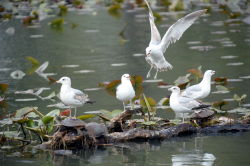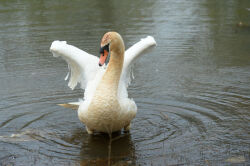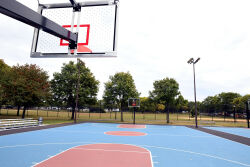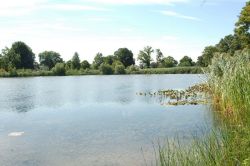Baisley Pond Park
Baisley Pond Park
What was here before?
Baisley Pond was created in the 18th century when local farmers dammed three streams to power their grain mill. The City of Brooklyn used local wells and cisterns for water and sensing that it would need alternate water sources, Williamsburg Water Works acquired Baisley Pond from David Baisley in 1852. Brooklyn voted in 1898 to become a part of New York City during the consolidation of the five boroughs. This decision was made in part to alleviate water supply problems.
While dredging Baisley Pond shortly after its acquisition, Brooklyn city workers made a startling discovery. Buried in the sediment, the remains of an American Mastodon (Mammut americanum), including five molars and a bone fragment, were found. The Mastodon likely lived in the area almost 10,000 years ago, just after the last Ice Age. Today, a sculpture of a Mastodon in Sutphin Playground commemorates the discovery and makes for a unique playmate.
How did this site become a park?
In 1914, the City transferred the northern half of the property to Parks and the site opened to the public in 1919. At the time, Queens was still a predominantly rural area, and the park remained a rustic preserve. In the 1920s, the area was urbanized as developers built hundreds of single-family homes. During the Great Depression, the Works Progress Administration constructed recreational facilities in the park, including a boat landing, several playgrounds, tennis and handball courts, baseball diamonds, and a football field. The community dedicated the Baisley Pond Park Memorial on September 5, 1921 to honor the local men lost in World War I.
The South Extension of the park was in disarray for decades. Not entirely under the jurisdiction of Parks until the 1960s, it remained a wasteland of old pumping stations and debris. In 1984, Parks, with the help of the local community, was finally able to transform this area and unify the park. The section now includes tennis and handball courts, a running track, an athletic field, cricket mounds, basketball courts, and playgrounds.
Although the park is used mostly for recreational sports, it remains a vital natural habitat for many species. Besides its fabled gigantic lily pads, the pond contains red-eared sliders, snapping turtles, musk turtles, and bullfrogs. Different varieties of dragonflies and a spectacular array of avian life thrive here as well. In the winter, Canadian geese, mallards, shovelers, coots, grebes, and gulls make their homes here. In the summer, blackbirds, cormorants, herons, egrets, doves, mockingbirds, robins, starlings, warblers, cardinals, and sparrows forage and breed in the area.
Who is this park named for?
The 30-acre pond and the park are named for David Baisley (1792 – 1875), a local farmer who owned this land in the early 19th century and operated the mill that was located on the pond. He, his wife Sarah, and their two children are all buried in Prospect Cemetery, Queens.
Check out your park's Vital Signs
Clean & Safe
Green & Resilient
Empowered & Engaged Users
Share your feedback or learn more about how this park is part of a
Vital Park System










